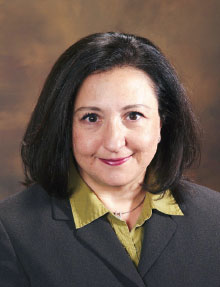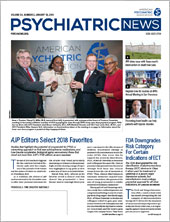Trained pharmacists have been allowed to furnish naloxone without a physician’s prescription in California since January 2016, yet as late as February 2018, pharmacist-furnished naloxone was available at only 23.5 percent of the state’s pharmacies, according to research published in the November 13, 2018, JAMA.
In the study, 30 trained interviewers posed as potential customers and used a standardized script to ask staff at 1,147 pharmacies whether it was possible to get naloxone without a prescription at the pharmacy. They found that pharmacist-furnished naloxone was available at less than a quarter of pharmacies, and only about half of those pharmacies had nasal naloxone in stock.
These findings are the latest to suggest a need for greater access to naloxone in community pharmacies. A paper published online in Drug and Alcohol Dependence in April 2018 noted that only 58 percent of pharmacies in Indiana stocked naloxone, and only 23.6 percent of pharmacists dispensed it in 2016 following a statewide standing order issued in 2015. An article published in the New York Times that same month suggested that only 37.5 percent of pharmacies in New York City stocked and would dispense naloxone under the state’s standing order.
“The numbers that were quoted in California and New York are very concerning,” said Elie Aoun, M.D., a general addictions and forensic psychiatrist at Columbia University and vice chair of APA’s Council on Addiction Psychiatry. “I’m based in New York. The neighborhoods that have the worst access to naloxone are some of the most underserved and where fatal overdoses are most likely to happen.”
There are several possible reasons pharmacists are reluctant to stock and dispense the drug, and the most likely is a need for more naloxone education. A study in the July-August 2018 issue of the Journal of the American Pharmacists Association found that only 49.2 percent of community pharmacists in North Carolina felt comfortable dispensing naloxone, and 53.7 percent cited inadequate training as a barrier to dispensing the drug. A study in the March-April 2017 issue of the same journal found that only 20.4 percent of community pharmacists in West Virginia—the state with the highest rate of opioid overdose deaths in the nation according to the Centers for Disease Control and Prevention—felt comfortable dispensing naloxone without a prescription. A vast majority, 77 percent, agreed with the statement, “I do not feel I am adequately trained in the use of naloxone over the counter.”
Talia Puzantian, Pharm.D., B.C.P.P., an associate professor of clinical sciences at Keck Graduate Institute School of Pharmacy and Health Sciences and a researcher in the California study, said that she and her colleague were able to identify knowledge gaps among pharmacists.
“Some said naloxone is a controlled substance and that it requires a prescription. Some said that if someone came in having an overdose, they would give it to them. But if you’re having an overdose, you wouldn’t be walking into a pharmacy—you would be unresponsive and barely breathing,” Puzantian said.
Puzantian noted that the knowledge gaps she and her co-author identified prompted them to develop a training webinar that meets California’s requirements. The California State Board of Pharmacy offers the training at no cost, and in the first three weeks of availability, roughly 500 pharmacists completed the free one-hour webinar.
Research suggests that a sense of moral hazard may be a second reason that some pharmacists hesitate to dispense naloxone. In North Carolina, 15.4 percent reported ethical and moral concerns with dispensing naloxone, and in West Virginia, 38 percent felt that letting patients purchase naloxone over the counter would increase opioid overdosing.
It would be a mistake to think that way, said Puzantian. “At least two studies I’ve seen showed that [providing naloxone] does not promote opioid use. It makes people more likely to take action and call 911.”
As for stocking naloxone at the pharmacy, that’s often a matter of real estate, Puzantian said.
“You put things on the shelves that move, like Lipitor and Viagra. If physicians aren’t writing prescriptions for it, you’re not going to have it,” Puzantian said. “I’m not trying to relieve pharmacists of blame, [but] if physicians prescribe it more and the public is more aware and asking for it, that initiates stocking with pharmacies.”
Aoun is on board with prescribing naloxone, even when state regulations do not require a prescription for pharmacists to dispense it, because it may help patients and caregivers remember to get it.
“I’ve made it part of my regular practice to give any patient I see a prescription for naloxone regardless of whether I am seeing the patient for a substance use disorder or not,” Aoun said. “Patients who don’t have an addiction are always surprised, but it opens the door for a productive conversation. I say, ‘People are dying of opioid overdoses right and left, and you might see someone on the street or have a family member or friend who [needs it one day].’ ”
Aoun believes that all clinicians should work together to make naloxone available in their communities. “We’re spending a lot of money, effort, and resources to treat people with opioid disorders. But we can’t treat people if they’re dead.” ■
“Provision of Naloxone Without a Prescription by California Pharmacists 2 Years After Legislation Implementation” can be accessed
here. “Predicting Pharmacy Naloxone Stocking and Dispensing Following a Statewide Standing Order, Indiana 2016” is available
here. ““Identifying Barriers to Dispensing Naloxone: A Survey of Community Pharmacists in North Carolina” is posted
here. “Overdose Antidote is Supposed to Be Easy to Get. It’s Not,” is available
here. “Pharmacists’ Readiness to Provide Naloxone in Community Pharmacies in West Virginia” is located
here.


